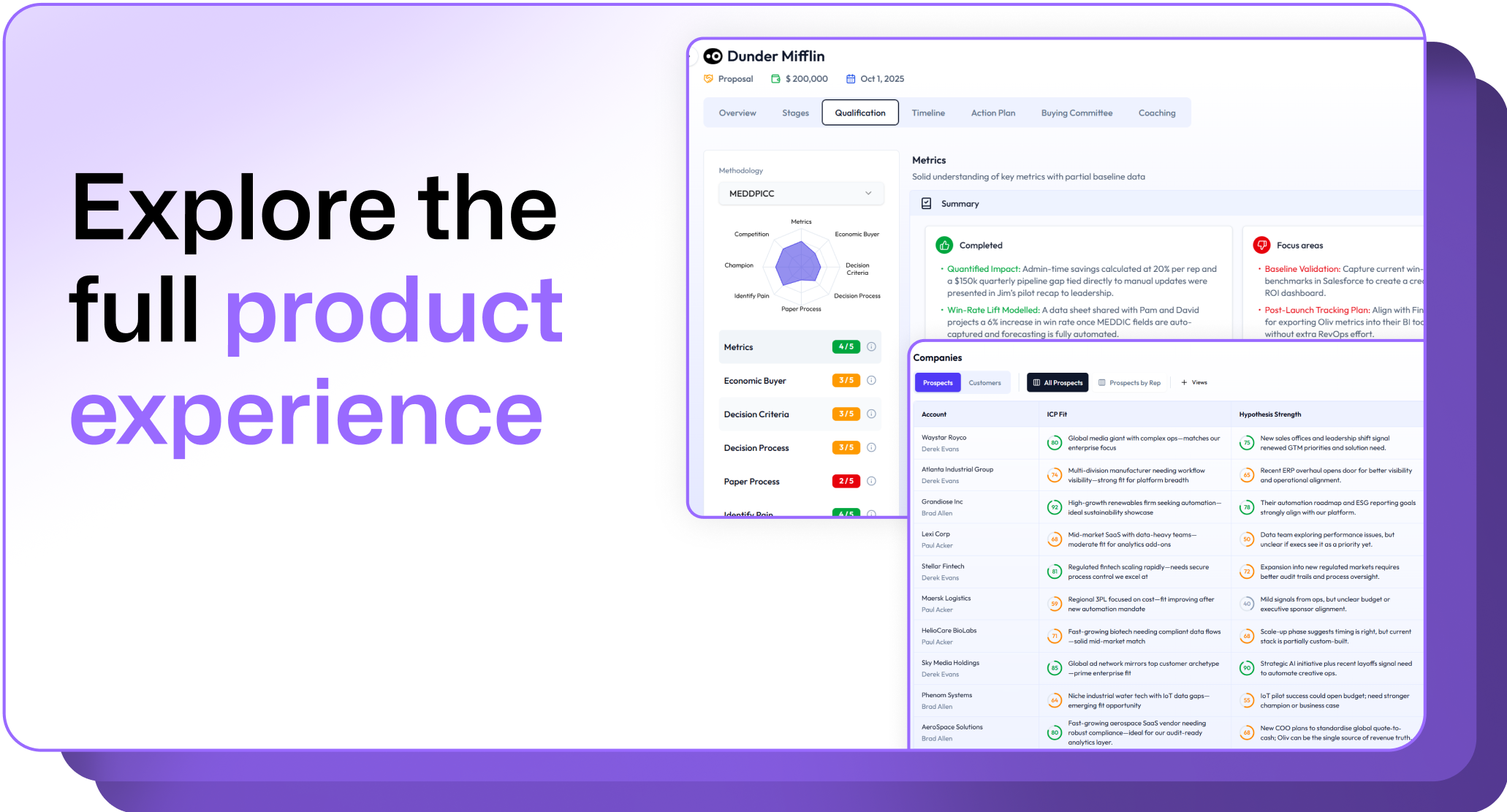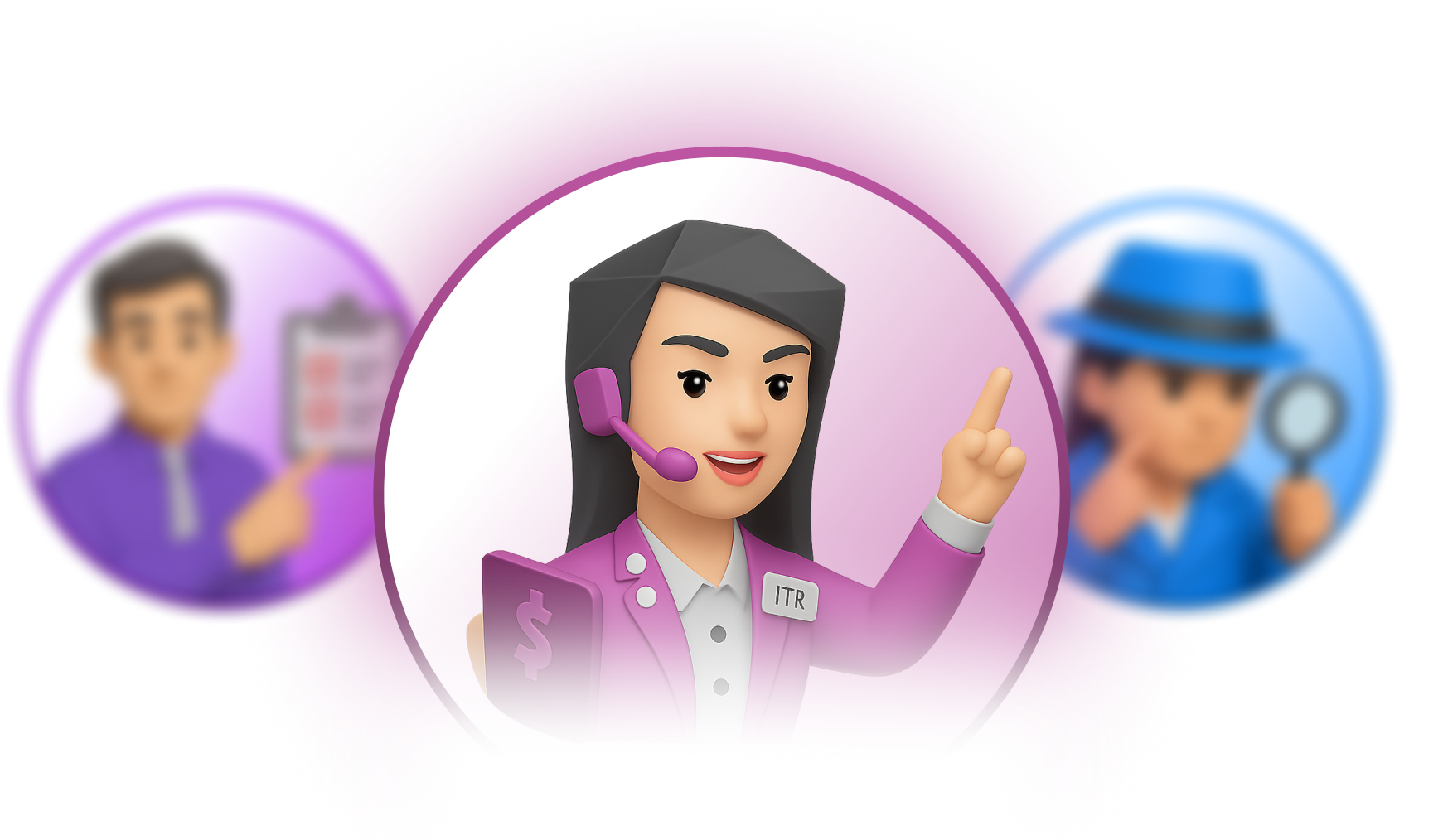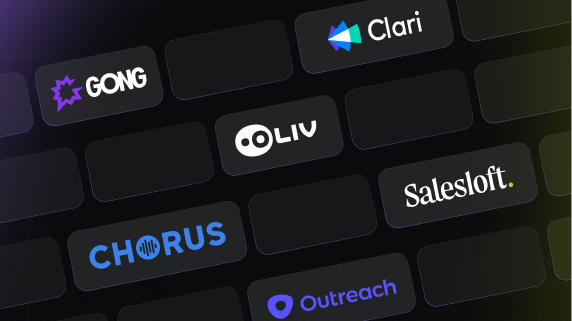Do you know where your sales team really spends most of their time?
A typical sales cycle looks like this:

Somewhere in this mix, there's a good chance your team's clocking in most of their hours. It makes sense, right? That's how deals get closed after all.
But here's the catch: too much time gets sucked into boring stuff like filling out endless spreadsheets and updating CRM records. Time that could be way better spent pulling in new leads and piling up those sales numbers. While seemingly harmless at the surface, these repetitive tasks might be subtly draining your team's time and energy, adding to their workload and frustration. Isn't it less closing, more unproductive?
This is where generative AI has started to change the world, shaking things up. It's like having a super-smart assistant taking all the repetitive, grunt work off your team's plate.
By automating time-consuming, repetitive tasks, generative AI allows your sales team to redirect their focus and energy towards more impactful activities, like building relationships with clients and strategizing for sales growth. It's not just about working harder, but smarter, leveraging technology to enhance productivity and effectiveness in the sales process.
AI tools like Oliv, your sales companion can help you from meeting prep reminders and in-depth research with automatic notes to live call transcription and real-time CRM sync. Oliv streamlines the sales process, allowing your team to focus on what they do best – selling.
Let’s dive deeper to understand how generative AI is transforming sales and how you can use it to exponentially scale your processes.
Why Generative AI in Sales?
Generative AI is a subset of artificial intelligence technologies capable of generating new content, ideas, or data based on their training. These AI models can produce text, images, audio, and other types of media that mimic human creativity and analytical skills. Unlike traditional AI, which primarily analyzes and processes existing information, generative AI can create entirely new, coherent, and contextually relevant content.
In the realm of sales, generative AI holds significant potential. Traditionally, sales have been slower to adopt digital technologies compared to other business functions like finance, logistics, and marketing. This delay is primarily due to the unstructured and highly variable nature of sales, which heavily relies on human interactions. However, the very characteristics that made sales challenging for conventional digital tools are what make it ideal for generative AI.
Think of all the information, documents and data involved in a sales process:
- Various types of emails
- Call recordings and transcripts
- Meeting notes
- Messaging on various channels like social media and WhatsApp
- Presentations
- Proposals
- Feedback and review forms
- Reports
This vast amount of unstructured data becomes overwhelming when trying to organize it and derive insights from it. However generative AI models are great for interpreting and learning from this kind of data. They can link different pieces of information, customize responses, and generate new content, making them well-suited for the dynamic and creative aspects of sales.
Use Cases of Generative AI in Sales
1. Lead Generation
The first step in a sales cycle is lead generation - finding and engaging potential customers. But what if this process could be smarter, more personalized, and far more efficient? That's exactly where generative AI comes into play. Here’s how generative AI is making lead generation more effective:
- Looking for Patterns in Customer Data: Think of generative AI as an assistant that goes through all your past sales info. It looks at customer chats, what they bought, and how they acted. It's like finding insights about what makes a customer likely to buy. This could include demographic details, purchasing patterns, or even the types of questions they asked before making a decision.
- Guessing Which Leads Will Buy: After spotting these patterns, AI can make smart guesses about which potential customers (leads) are more likely to make a purchase. Say, if it sees that people from the tech industry often buy your product, it'll tell you to focus on similar people in your list.
- Advising on How to Talk to Potential Customers: AI doesn't just stop at figuring out who might buy. It also advises on the best ways to reach out to them. For some, it might suggest sending personalized emails, while for others, a quick call or a message on social media might work better.
- Creating Custom Personalized Messages: One of the coolest things AI does is write messages that talk directly to what each potential customer likes or needs. For example, if someone showed interest in a specific feature of your product before, AI can help create a message highlighting that feature.
In short, generative AI is like a smart assistant in the lead generation process. It doesn't just do things faster; it also adds a personal touch that wasn't possible with old methods. This means you can use your time and effort on leads that are more likely to pay off, possibly increasing your sales.
2. Sales Enablement Materials
Sales enablement materials, including presentations, brochures, and demo videos, are crucial in equipping sales teams with the resources they need to effectively communicate with prospects and close deals. Generative AI is automating and personalizing the creation of these materials.
- Crafting Perfect Presentations: Say you have a big pitch coming up. Instead of spending hours on PowerPoint, generative AI can quickly whip up a presentation for you. If your potential client loves detailed graphs, the AI adds them in. If they prefer bold visuals, you get a presentation full of eye-catching images.
- Designing Dynamic Brochures and Emails: AI can also create brochures and emails, tailored to each person who might read them. For a tech-savvy audience, it'll focus on the gadget's cool features. For those more interested in practicality, it highlights usability and benefits.
- Creating Engaging Demo Videos: With AI, you just feed it basic info, and it produces a slick, engaging video. It can even change the video's style based on who's watching. A younger audience might get something fast-paced and fun, while a more professional group gets a video that's straight to the point and informative.
3. Design Sales Proposal Slides
In the art of persuasion, a well-crafted sales proposal can be your ace in the hole. But creating slides that hit the mark every time isn’t always easy. That's where AI is stepping up, bringing a blend of creativity and analytics to the table.
When it comes to designing sales proposal slides, think of generative AI as having a savvy design assistant who knows what works and what doesn’t:
- Learning from Past Wins: Imagine you had a proposal last year that was a hit with a client. AI remembers that using certain infographics and data charts worked wonders. So, when you're preparing for a new client with similar industry and demographics, it suggests using similar elements but updated with the latest data.
- Customizing for Your Audience: Let's say you're pitching to a startup. AI knows startups often prefer concise, visually dynamic content. So, it proposes a minimalist design with bold graphics and bite-sized text focusing on innovation and growth potential.
- Optimal Layout and Content Suggestions: If you are ever stuck on what layout to use for a narrative in your proposal, AI might recommend starting your slide deck with a compelling customer success story, using real data. It even helps pick out the most impactful testimonial from your client database.
- Industry-Specific Adjustments: If you're presenting to a fashion retail brand, AI might suggest a vibrant, image-heavy layout showcasing your product in lifestyle settings. Conversely, for a financial services pitch, it might opt for a more conservative design with graphs and pie charts illustrating market trends and financial gains.
With AI, you're crafting a targeted, data-driven, and visually appealing story tailored to each specific audience, making every proposal a compelling narrative that speaks directly to your client's needs and interests.
4. Process Data for Segmentation
- Spotting Patterns in Customer Behavior: AI identifies patterns, like certain age groups favoring specific types of products. Using these insights, AI groups similar customers together. This way, you can tailor your marketing efforts to match their preferences, ensuring that your strategies are hitting the right note with the right audience.
- Understanding Preferences: AI also gets what your customers like and don’t like. Say you have a group of customers who frequently purchase sports equipment. AI will cluster them into a 'sports enthusiasts' segment, so you can tailor your marketing to talk about athletic gear, fitness tips, and the like.
- Demographic-Based Grouping: This is where AI takes basic info like age, location, or job and uses it to segment customers. Imagine you run an online bookstore. AI can help you create a segment of a specific genre in a specific city, so you can send them info about local book readings or new releases in that genre.
It helps you talk to the right people with the right message, making your sales efforts more effective and your customers more engaged.
5. Sales Insights and Analytics
Generative AI in sales is not just interpreting vast amounts of data, but turning it into a goldmine of actionable intelligence. From predicting future market trends to identifying areas for improvement, AI is equipping sales teams with the tools they need to refine their strategies and enhance overall efficiency.
- Processing Sales Data for Insights: AI can analyze mountains of sales data, from transaction histories to customer feedback. It looks for patterns and trends that might not be obvious at first glance. For example, it might uncover that certain products sell better at specific times of the year, or that particular sales strategies are more effective with a certain demographic.
- Predicting Future Trends: AI can predict what products or services might become popular in the coming months or even identify emerging customer needs before they become mainstream. This forward-looking insight allows businesses to stay ahead of the curve.
- Identifying Improvement Areas: AI doesn’t just highlight what's working well; it also pinpoints areas that need a boost. This helps businesses focus their improvement efforts where they're needed most.
- Suggesting Actions for Efficiency: AI can suggest specific actions to improve sales efficiency. Maybe it's about adjusting pricing strategies, changing up marketing tactics, or even tweaking product features. These suggestions are based on hard data, giving sales teams actionable advice to enhance performance.
By harnessing the power of AI to process and analyze sales data, businesses can unlock a wealth of insights that were previously inaccessible.
7. Sales Automation
AI can automate routine sales tasks such as scheduling meetings, following up with clients, and updating CRM systems. This automation frees up sales representatives to focus on more complex and high-value activities, such as building relationships with key clients.
- Scheduling Meetings: AI tools can manage calendars and schedule meetings effortlessly. For instance, after a client interaction, AI can automatically propose meeting times to both parties, taking into account preferred time slots and existing commitments. This eliminates the back-and-forth often involved in scheduling.
- Client Follow-Ups: After a meeting, it can send out thank-you emails, or if a client hasn't been contacted in a while, it can initiate a check-in email. This ensures no client feels neglected and helps maintain a consistent line of communication.
- Updating CRM Systems: One of the most time-consuming tasks in sales is keeping the CRM system up-to-date. AI can automatically log calls, emails, and meeting notes into the CRM. This not only saves time but also ensures that the data is accurate and up-to-date, providing a reliable foundation for future sales strategies.
- Sending Out Reminders and Alerts: AI can send reminders to sales reps about upcoming appointments, follow-up tasks, or deadlines. This helps in keeping the sales process organized and ensures that important activities don't fall through the cracks.
- Generating Reports: AI can compile data and generate reports, providing sales teams with insights into their performance, customer trends, and other key metrics. This allows sales reps to understand their progress and areas that need attention without spending hours on data analysis.
AI can help by taking over the mundane yet necessary tasks and allowing sales teams to focus on what truly matters.
8. Sales Training
Sales training is an essential component of a successful sales strategy, and generative AI is transforming how this training is delivered and experienced. By offering personalized, interactive, and dynamic training modules, AI is enabling sales teams to hone their skills more effectively.
- Customized Training Materials: AI can analyze a salesperson's past performance, strengths, and areas that need improvement. Based on this analysis, it generates training materials tailored to each individual. For instance, if a sales rep struggles with closing deals, the AI can provide specific modules focusing on closing techniques.
- Simulating Sales Scenarios: AI can create realistic customer interaction scenarios for practice. These simulations can range from dealing with difficult customers to negotiating large contracts.
- Performance Feedback: After each training exercise, the AI can offer insights into what the salesperson did well and areas where they can improve, complete with suggestions for further learning.
- Adaptive Learning Paths: As the salesperson progresses, the AI adjusts the difficulty and focus of the training. This ensures that the training remains challenging and relevant, continuously aiding the development of the salesperson's skills.
In essence, generative AI provides a more personalized, interactive, and effective approach to sales training. It caters to the unique needs of each salesperson, making training a more engaging and beneficial experience. This not only enhances the skill set of each team member but also contributes to the overall performance and success of the sales team.
9. Sentiment Analysis
Sentiment analysis, powered by AI, is a critical tool for understanding and enhancing customer relationships. By analyzing the tone and content of customer communications across various platforms, AI provides valuable insights into customer emotions and perceptions.
- Email Communication Analysis: AI can scan through email exchanges between your sales team and customers. It picks up on cues like word choice, phrases, and overall tone to determine whether the customer is happy, frustrated, or indifferent. For example, if a customer’s emails shift from positive to neutral or negative, this might be a sign to reach out and address any potential issues.
- Call Sentiment Analysis: During phone conversations, AI tools can analyze vocal tones and speech patterns. This helps in understanding the customer's mood and satisfaction level.
- Social Media Interaction Insights: AI can monitor social media platforms where customers might comment on your products or services. It evaluates the sentiment behind comments, reviews, and posts, giving a broad view of public perception.
- Product and Service Development: The insights gained from sentiment analysis can inform product development and service offerings. Understanding what customers love or dislike helps in making data-driven decisions about future enhancements or new product launches.
AI-driven sentiment analysis offers a deeper understanding of customer emotions and perceptions. This insight is invaluable for refining sales tactics, personalizing customer interactions, and ultimately building stronger, more positive relationships with customers.
Challenges and Considerations
Despite its potential, implementing generative AI in sales faces challenges. There is a talent shortage in defining roles, training models, and developing applications. Ensuring accuracy and consistency remains a concern, as tools like ChatGPT can sometimes produce inaccurate answers or incorrect inferences.
- Data Privacy and Security: The use of generative AI in sales often involves processing sensitive customer data. Ensuring the privacy and security of this data is crucial, especially with stringent regulations like GDPR. There's a risk of data breaches or misuse of customer information.
- Quality and Relevance of Generated Content: Ensuring that the AI-generated content, such as product descriptions or sales emails, is of high quality and relevant to the target audience is challenging. Inaccurate or irrelevant content can lead to customer dissatisfaction and harm the brand's reputation.
- Integration with Existing Systems: Integrating generative AI tools with existing sales and CRM systems can be technically challenging. This integration needs to be seamless to ensure efficient workflows and data synchronization.
- Overdependence and Skill Erosion: Relying heavily on AI for sales tasks can lead to a decrease in human skills and judgement in these areas. Sales teams might become overdependent on AI, potentially leading to issues if the AI system fails or provides suboptimal suggestions.
- Evolving Consumer Behavior: Consumer preferences and behaviors change rapidly. Keeping the AI models updated and relevant to these changes is a continuous challenge.
Addressing these challenges requires a combination of technical solutions, ethical guidelines, regulatory compliance, and continuous monitoring and updating of AI systems.
Strategy for Effective Implementation of Generative AI in Sales
To harness the power of generative AI effectively in sales, it's crucial to integrate these capabilities into existing systems. This approach can yield quick results, often in weeks rather than months. However, it's essential to have strategies that mitigate the risk of falsehoods, deliver results cost-effectively, and realize value swiftly.
1. Seamless Integration and Quality Data Training
Incorporate AI smoothly into existing systems with a focus on training it with high-quality, relevant data. This ensures real-time insights and reduces inaccuracies.
2. Cost-Effective Deployment and Agile Development
Balance costs with expected improvements in sales, adopting a rapid, iterative development process for quick adaptation based on feedback.
3. Compliance, Ethics, and Bias Mitigation
Ensure AI solutions adhere to data privacy laws and ethical standards while regularly auditing for biases to maintain fairness and trust.
4. Employee Training and System Transparency
Educate sales teams on effective AI usage and ensure the AI's decision-making process is transparent for better understanding and trust among stakeholders.
AI's Role in the Future of Sales
The question of whether AI is a productivity aid or a substitute for salespeople is complex. While AI can automate certain tasks, reducing the burden on salespeople, it cannot entirely replace the human element. Sales roles, especially in complex scenarios, still require human salespeople who can understand nuanced needs, tailor solutions, and navigate intricate buying organizations. At the same time, the companies developing and selling AI technologies will likely create extensive sales forces to capture the significant opportunities that these technologies present.
In conclusion, generative AI represents a transformative opportunity in sales. It can optimize various aspects of the sales process, from lead generation to sales training. However, its implementation should be strategic, ensuring that it complements human skills and addresses the unique challenges of the sales domain.
💰 Gong Pricing Calculator:
Estimate your first-year cost based on team size and typical fee structures. Adjust any assumptions below.












.png)
.png)
.png)


